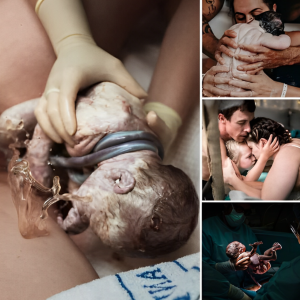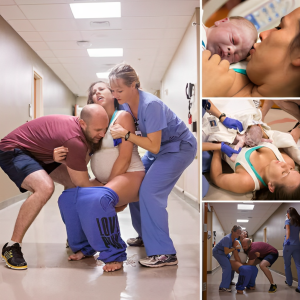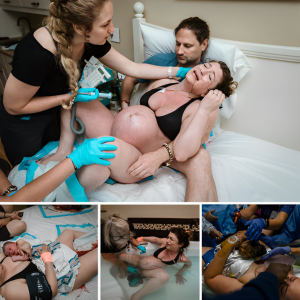Home birth takes a bit of preparation. In addition to learning coping techniques for labor, studying the physiology of birth, and buying items for the new baby, you’ll need to spend some time gathering items and supplies for the birth. The blog breaks down everything you need to know in order to prepare the home (and it’s really not too complicated or expensive!).
When you are around 32-34 weeks pregnant, you will order a box of supplies called a “birth kit,” which has all the disposable supplies your midwife might use during the labor/birth. The kit costs about $55 and is shipped directly to your home. Here is a list of what’s included in my birth kit:
· Chux pads
· Mesh briefs
· Alcohol prep pads
· Sterile lube
· Scrub brush
· Peri bottle
· Umbilical cord band
· Drinking straws
· Sterile gloves
· Non-sterile gloves
· Gauze
· Baby hats
· Heel lancet
· Sani-cloth wipes
· Sitz bath herbs
· Birth pool liner
In addition to this box of supplies, you will be asked to gather a list of additional supplies. In this post, I’ll describe what these items are used for:
- Electric Heating Pad: used for comfort measures, as well as warming newborn blankets.
- Portable space heater: Newborns lose heat easily. When the birth is imminent, we will warm up the room so that it’s toasty for the baby.
- Hand mirror: this is used so you can watch the head emerging as you push (if desired).
- Hydrogen peroxide: used to remove any blood stains.
- Soft gel ice packs or “padsicles”: used for soothing perineum in the postpartum
- Flashlight: birth usually happens in dim lighting. A flashlight allows us to get a closer look without having to turn on all the lights.
- Large plastic garbage bags: trash and laundry.
- Olive oil: sometimes used during birth, also used to help clean up meconium in the immediate postpartum.
- Crockpot: used to keep water warm in the birth room to use for perineal compress. Sometimes Sitz bath herbs are added in.
- Large towels: most people get in and out of the tub or shower multiple times throughout labor.
- Mattress protector: Self-explanatory!
- Large bowl, stainless steel, or glass: for the placenta.
- Potable water hose: for filling and draining the tub
- 2 sets of sheets: one set that can get messy, and then a clean set under the mattress protector for after the birth.
Birth Tub:
If you are using a tub for your labor, consider what room or area of the house it will be in. You will be filling the tub with a hose that connects to a hot water source (usually the shower is the simplest), so you’ll want the tub to be set up within 50 ft. of a bathroom. You’ll want a tarp for under the tub. Make sure to test the connection between the hose and hot water source well before labor begins; you may need to purchase an adaptor from the hardware store.
Additional Setup Considerations:
Think about what will make the birth space feel most special and calming for you. Some people write out or buy cards with mantras, and tape them to the walls around the space. Some people build an altar with pictures, important objects, flowers, etc. Consider lighting: string lights or a dim lamp create a soothing environment. Make sure the room where you imagine spending the most time has curtains on the windows; most people appreciate privacy and darkness while laboring.
Preparing for a home birth may seem overwhelming, but Emunah Midwifery in Berkeley, CA is here to guide you through the process. Their informative blog post breaks down all the necessary supplies and preparations, making it simple and affordable. From ordering a birth kit with disposable supplies to gathering additional items like heating pads, towels, and a birth tub, Emunah Midwifery provides comprehensive guidance for a smooth home birth experience. Take the first step towards a well-prepared home birth by visiting their website and accessing the detailed information you need. Embrace the beauty of home birth with the support and expertise of the Midwives at Emunah.







